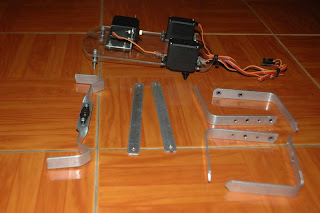~ Mdm Nurul Rodziah Bt. Abdul Ghafar
~ Mdm Azura Bt Hamzah
I've been assessed well by the lectures as they ask about my project from beginning till I've succeed to produce the robot of my own.
After my presentation, me and my friend proceed to competition track to start the challenge. Each of student's robot who compete have their own ability and unique design.
Each competitor preparing their robot for the race
The winner will be calculate by how many turn the robot can move in limited time.
Alhamdulillah, at last I get 3rd place in the race when I completed one turn within 3 minutes. It was very challenging as the obstacle sensor circuit was torn out by sudden, but the robot still making its move till the end. I'm really gratefully to win on 3rd place in this competition.
Next, I need to start my progress on completing the FYP report as it need to be submit by week 17.





























.jpg)
2.jpg)



















